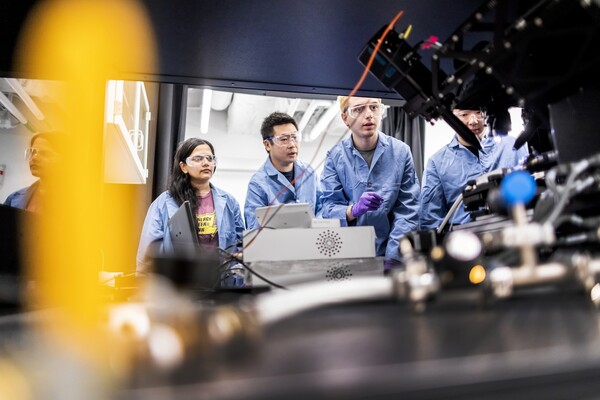
nocred

If your job requires spending hours working at a computer or in a lab, you may be at an increased risk for repetitive stress injuries such as back and neck pain, carpal tunnel syndrome or tendinitis. In an effort to avoid those ailments, the Office of Environmental Health & Radiation Safety (EHRS) at Penn offers ergonomic evaluations to assess whether staff and faculty workstations are comfortable and safe.
“The goal is to have people work in a natural, comfortable position,” says Karen Kelley, senior industrial hygienist and manager of the ergonomics program. “We look at the height of the keyboard, the height of the monitor and the fit of (the) chair.”
Kelley says chairs should allow for feet to be firmly planted on the floor, with calves and thighs at a 90 degree angle. Chairs should also off lumbar and back support so that a person's torso is at a 90-degree angle to his or her thighs. To prevent neck strain, she says computer monitors should be positioned so the top is just above eye level, and keyboards should be positioned at the same height as a user's elbows.
Many Penn employees have started using laptop computers as their primary work tool and Kelly says that presents a different set of posture problems. The laptop’s design doesn’t allow the monitor and keyboard to be positioned correctly to avoid stress and strain on muscles, tendons and the skeletal system.
“Our recommendation is to raise the monitor to the proper viewing height, and to use an external keyboard and mouse,” Kelley says. “When using the laptop in other locations, such as a library, it is important to limit the amount of time spent sitting in the same position.”
Employees who work in labs for extended periods can also suffer injuries from performing repetitive tasks such as pipetting and working in awkward positions when using equipment such as a microscope. Kelley recommends varying tasks, or repositioning equipment to reduce the risk of injury.
Whether an employee is a desktop or laptop user, or is performing repetitive tasks, Kelley says he or she should take short breaks every 45 to 60 minutes to stretch and change body position. The EHRS website offers additional tips on how to make workspaces safe and comfortable, including stretches workers can do to avoid injury.
For more information, visit Ergonomics @ Penn.
Jeanne Leong

nocred

Image: Pencho Chukov via Getty Images

The sun shades on the Vagelos Institute for Energy Science and Technology.
nocred

Image: Courtesy of Penn Engineering Today